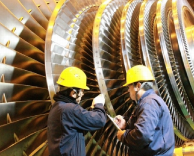How to Effectively Manage the Cost of Lubricant Filtration in Industrial Applications
Introduction
Lubricant filtration is an important practice for many sectors, such as manufacturing, mining and fleet, because of its role in preserving and prolonging the life of expensive machinery. In such cases, the cost burden of lubricant filtration, including filter change-out, oil disposal, and labor, may soon outweigh the benefit, especially in high contamination settings. Nonetheless, maintenance teams can implement strategies that drive down these costs whilst preserving equipment integrity.
The importance of Lubricant Filtration
Lube filtration serves the purpose of extracting pollutants like dirt, metal debris, water, and other contaminants from the oils utilized in machinery and engines. If ignored, these contaminants can cause early equipment failure, increased maintenance expenditure, and poor operational functionality. Machine Performance: Prompt filtration improves machine performance, minimizes downtime, and increases the long lifespan of a wide range of lubricants.
Common Contaminants in Lubricants
Most oils you would buy nowadays are not 100% clean. New lubricants can also have small particles that can clog filters and ruin machinery. Common contaminants include:
- Dust & Soil: Commonly introduced from the surrounding environment or during the handling of oil.
- Metal shards: Close to shards from wear in the equipment.
- Water: May get into the oil by refrigeration or from leakage.
- Additive: In the long run, oil additives experience degradation and can act as contaminants.
Cost Associated with Lubrication Filtration
Improper management of lubricants can be quite expensive in terms of lubricant filtration. Below, we take you through a handful of important costs to consider.
- Filter Replacement: Frequent replacements can become costly very fast.
- Labor Costs: Time spent monitoring, inspecting, and changing filters.
- Disposal of oil: Waste filters and polluted oils must be disposed of safely
- Downtime: Filters that require excessive change-outs or have premature failure can result in operational downtime.
For more information about Lubricant Filtration - Click Here
Key Factors for Reducing Filtration Costs
Filter Micron Size
Maintaining the right level of efficiency by selecting the correct filter micron size is a vital aspect of lubricant filtration. Excessively fine micron-rated filters restrict oil flow, while excessively coarse micron-rated filters permit the passage of harmful particles. Thus, the filter should be selected appropriately according to the lubrication requirements and the particle size that would be present in the lubrication system.
Considerations of temperature and viscosity.
The performance of such filters is directly linked to oil temperature and viscosity. Low temperatures could lead to the fat thickening, which usually makes passing through the filters tougher, and high temperatures may lead to oil breakdown. By matching oil viscosity with the appropriate filter micron size, we can help reduce premature loading on the filtration system
Moisture Control
Presence of moisture in the lubricants can lead the corrosion, rust, and ineffective oil. Spin-on or Drop-in filters are great at removing water. (as long as the water content is low.) For more moisture, these advanced technologies can offer solutions, such as using the vacuum to dehydrate the oil (that vacuum dehydrator weapon item).
Technologies to Improve Filtration Efficiency
Delta-P Indicators and Bypass Indicators
Bypass indicators ensure that maintenance teams are informed when the filter is close to full and is due for change, only when necessary, and avoid unnecessary premature filter changes. In contrast, Delta-P indicators measure the differential pressure over the filter and provide an immediate indication of when a filter has become clogged and needs servicing.
Online Particle Counting
Online particle counters which measure the cleanliness of the lubricant and detect whether it is contaminated. Real-time tracking of particle counts allows maintenance teams to determine filter replacement without deleting it too early or too late.
Automated Alarms To Clean Filters
Able to set up automated alerts, where operators are notified when filters need suitable care. This plan allows all filters to be changed according to the condition of the oil rather than a set frequency.
Best Practices for Cost-Effective Lubrication Filtration
Here are some of the best practices to effectively manage and control the cost of lubricant filtration that you must follow:
- Regular Oil Sampling: Establish the filter change frequency by continuously monitoring the quality of the oil and the contaminant content.
- Maintenance staff: Train your team on how to choose the right filters and keep the system up and running to decrease unnecessary change-outs.
- Invest in Better Filters: Opt for the best filters with better longevity; these would require replacement less often and offer better filtration as well.
- Track filter performance: invest in technology like particle counters and bypass indicators in order to ensure filters are performing optimally, minimizing costly and unnecessary filter changes.
Conclusion
The key to controlling the cost of lubricant filtration consists of the following three points: appropriate selection of filters, application of advanced technology, and a suitable maintenance strategy. ConclusionFiltering lubricants is an expensive practice that is often disregarded, and compared to imperfect filtration technologies, it is critical to consider the factors affecting the efficiency of filtration and implement some good practices to ensure that machines will run smoothly with the least possible expenditures.
Learn more about our services and industry insights by visiting our official LinkedIn page: Minimac Systems




